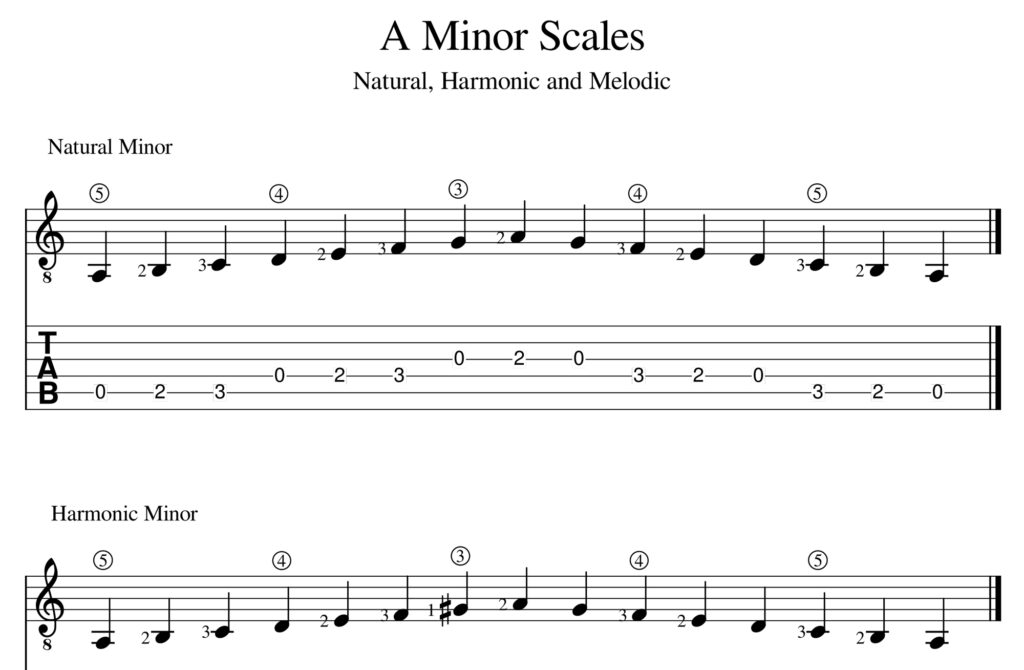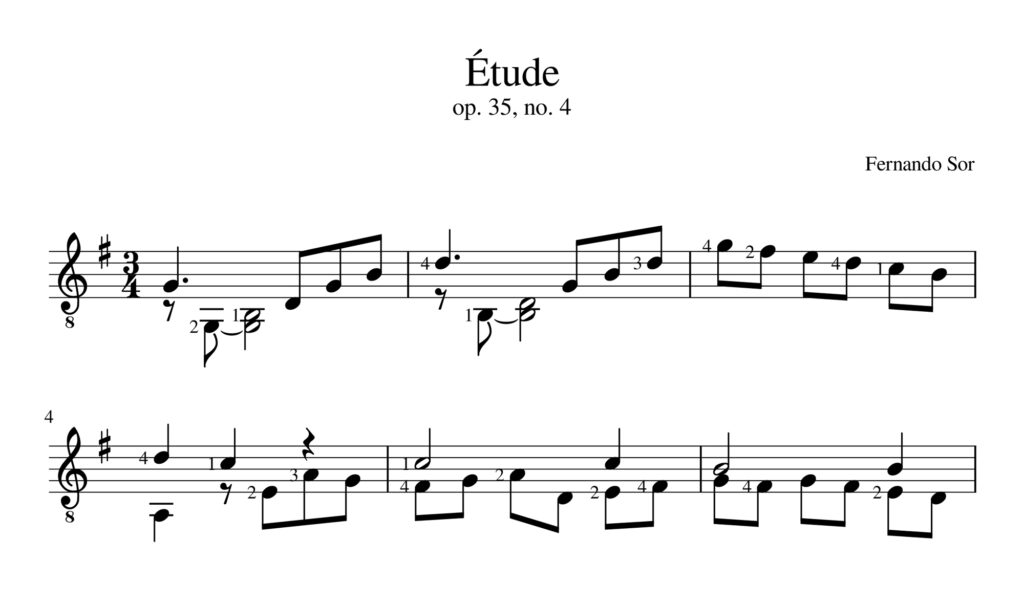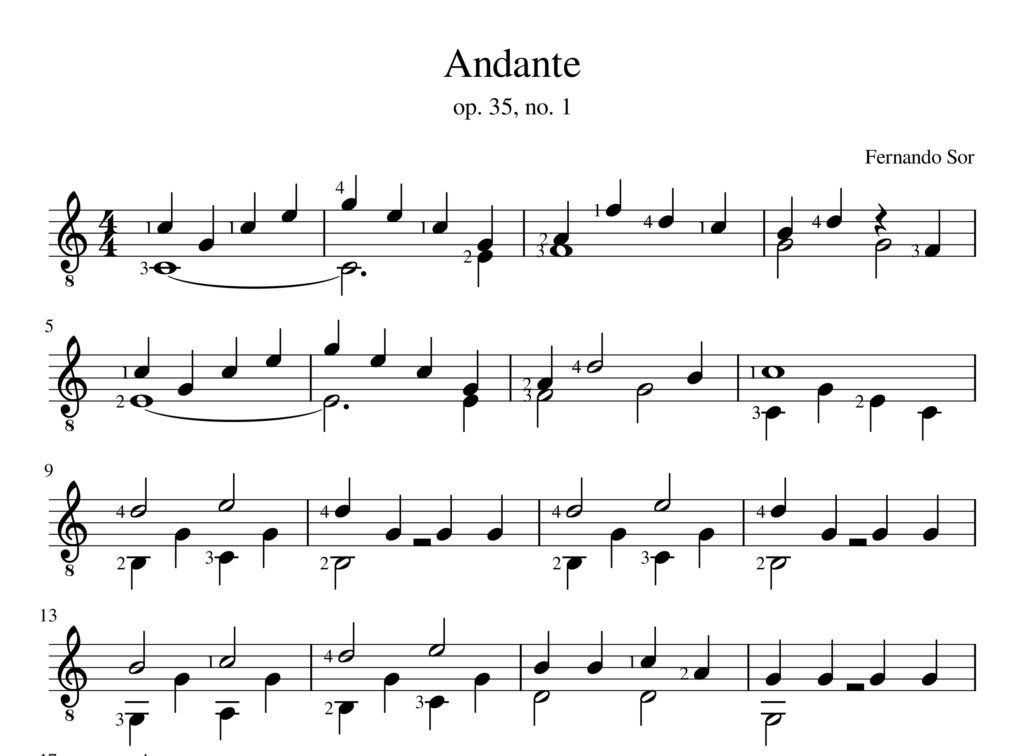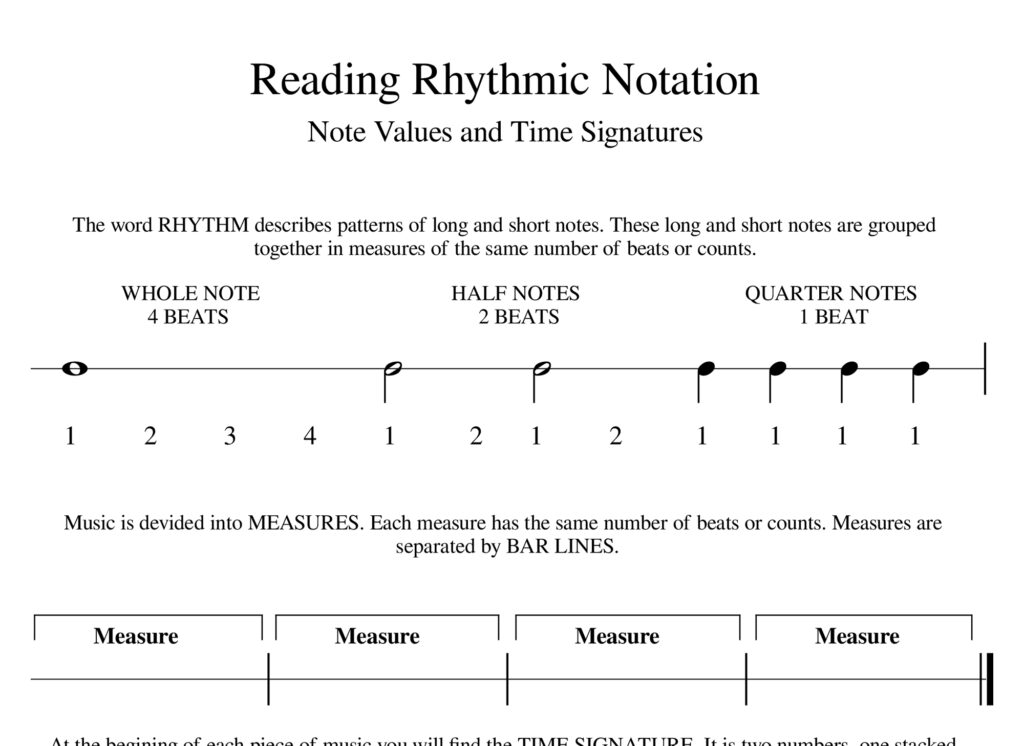Mauro Giuliani’s Arpeggio Studies

Mauro Giuliani’s Arpeggio Studies are designed to build right hand strength, independence and dexterity through a series of progressive exercises.
Understanding Guitar Notation Book

I’m developing a book to help guitar students master the fundamentals of reading musical notation for the guitar.
Major and Minor Scales

Music is patterns of sound, and two fundamentals in music are rhythm patterns (how combinations of long and short notes relate to a steady beat or pulse) and pitch patterns (what notes are played).
The specific pitches used in a piece of music are usually derived from a scale. This post explores major and minor scales for piano and guitar.
One Octave Major Scales for Piano in 12 Keys

This is the second complete set of scales I’ve added to my website. These one octave scales are required preparation for playing formula patterns.
Larghetto and Étude, Op. 35 – by Fernando Sor

Larghetto No 3. and Étude No. 4 introduce some more challenging techniques for the classical guitar, like partial barre chords and ornaments. While still considered “easy” pieces, there will be measures that require extra attention.
One Octave Scales in Three Positions in 12 Keys

The most common one octave scale positions in all 12 keys. These are a great way to begin to see the different shapes a major can take on the classical guitar and the electric guitar and will prepare you for 2 octave scales.
Sight Reading Exercises for Guitar

I’m in the process of making a book of exercises for students learning to read notation for the guitar, suitable for all musical styles.
Exercices très faciles (24 Very Easy Exercises) – by Fernando Sor

Fernando Sor (1778 – 1839) was one of history’s greatest players and composers for the classical guitar.
BWV 999

One of the greatest joys of my life as a musician has been playing music written by J.S. Bach. This piece, originally composed for keyboard in the key of C minor, has been transposed to the key of D minor for the classical guitar.
Reading Rhythmic Notation and Rhythm Exercises

No matter what instrument you play, practising stand-alone rhythm exercises can help build skill and confidence.